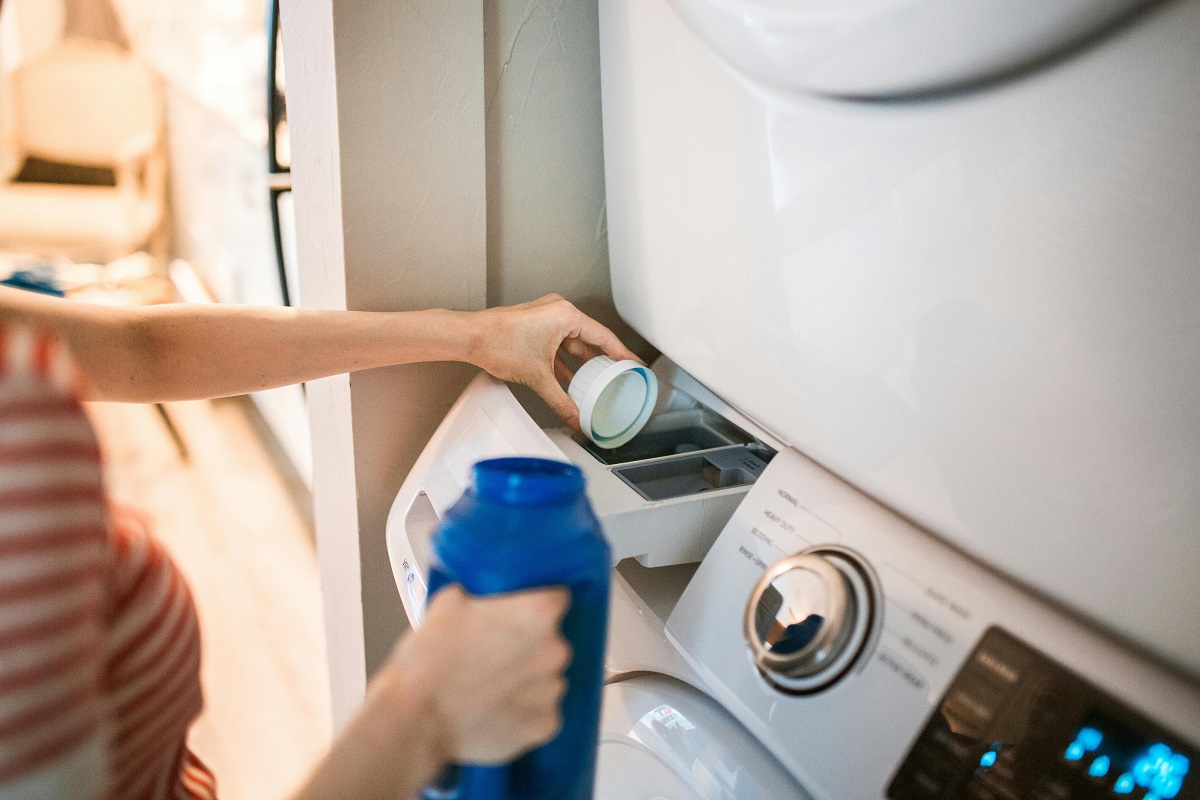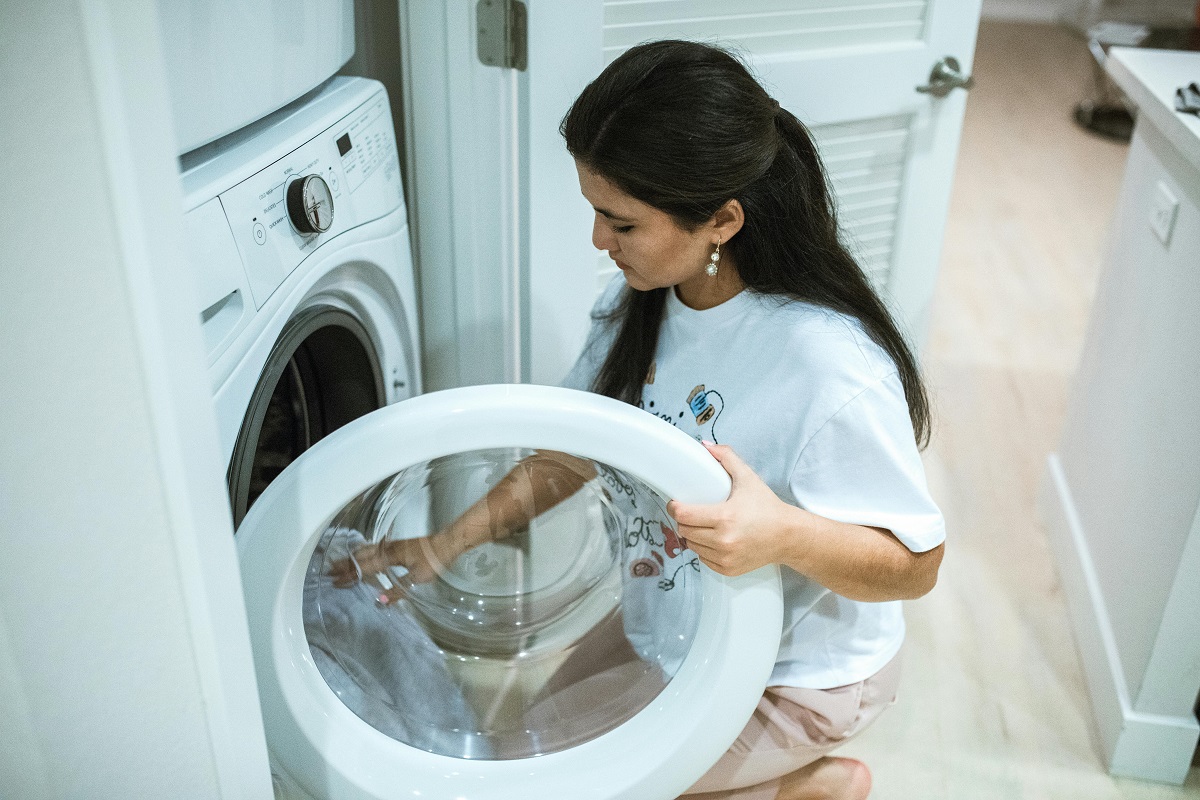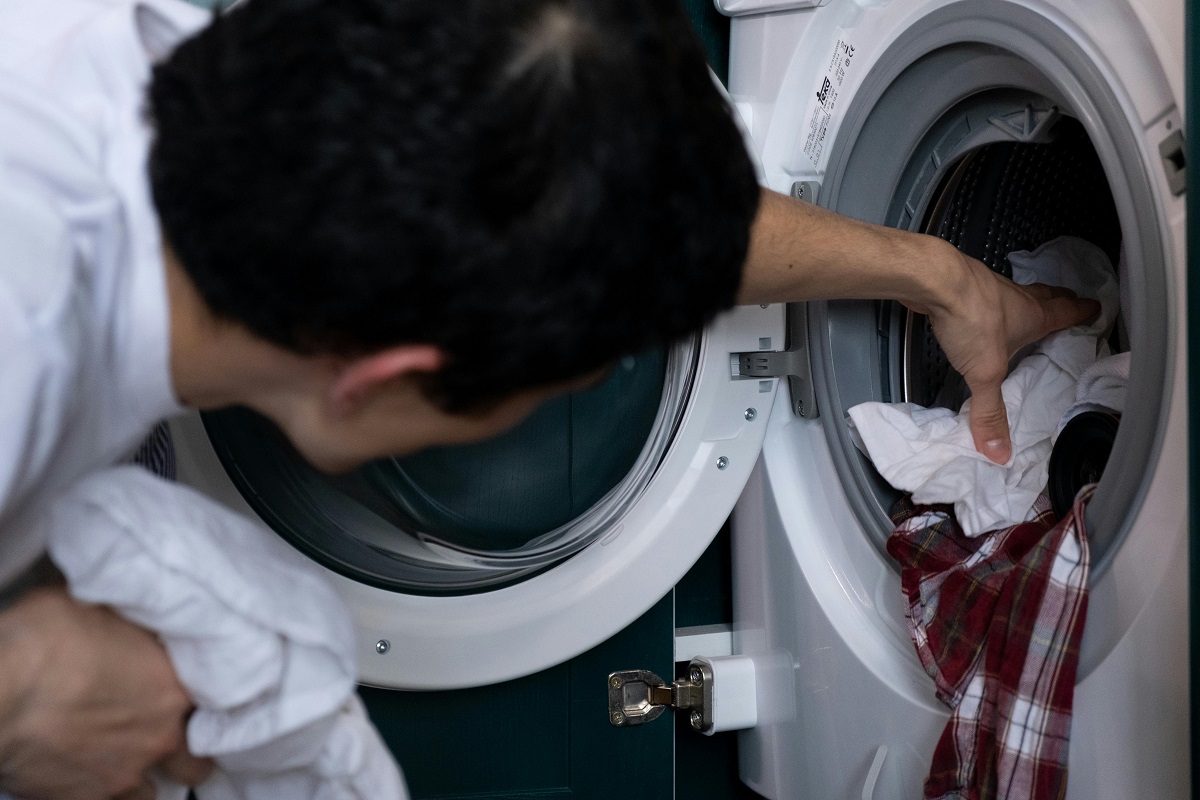- Identify the cause first: Common issues like clogged hoses, blocked filters, faulty pumps, kinked hoses, or electrical problems determine the proper fix.
- Know your machine type: Front-load and top-load machines drain differently, affecting how you troubleshoot and resolve problems.
- Regular maintenance prevents issues: Cleaning filters, checking hoses, and running occasional cleaning cycles can reduce the risk of drainage problems.
- Inspect and clean key components: Drain hoses, filters, and pumps are often the main culprits and should be checked and cleaned before considering replacements.
- Check mechanical switches: Lid switches on top-loaders and door locks on front-loaders can prevent draining if faulty.
- DIY solutions can be effective: Using plungers, hot water and vinegar, or a small snake can resolve minor clogs without professional help.
- Know when to call a professional: Persistent clogs, electrical problems, or complex pump issues may require a technician to avoid further damage.
A washing machine that won’t drain can quickly turn laundry day into a frustrating and stressful experience, leaving you with puddles of water and soaked clothes. The good news is that most drainage problems are easily resolved. Whether you have a front-load or a top-load machine, understanding your appliance is the first step to a successful fix. This comprehensive guide will walk you through the necessary steps to resolve draining issues for both types of washing machines.
Why Is Your Washing Machine Not Draining?
Before diving into solutions, it’s important to understand why your machine might not be draining. Common causes include:
- Clogged drain hose: Lint, coins, or small objects can block water flow.
- Faulty pump: The pump may be broken, worn out, or jammed.
- Blocked filter: Many machines have a filter that traps debris—when it’s full, water can’t drain.
- Kinked hoses: Hoses that are bent or pinched can prevent water from leaving the drum.
- Electrical or control issues: Sometimes the problem isn’t mechanical but related to the control panel or sensors.
Understanding the cause will help you choose the right solution for your specific machine type.
Front-Load vs Top-Load: What’s the Difference in Drainage?

Front-load and top-load washing machines handle water differently, which affects how you troubleshoot drainage issues.
Front-Load Machines
- Water is filled at the bottom, and gravity assists in drainage.
- Drain pumps are usually more powerful but can be more prone to clogs from lint or small items.
- Front-loaders often have a removable drain filter for easier cleaning.
Top-Load Machines
- Water fills from the top and drains downward through the pump.
- Fewer compact spaces, so objects may get trapped differently than in front-loaders.
- Some top-load machines don’t have easily accessible filters, which can make troubleshooting slightly more complex.
Knowing these differences helps you identify the most likely issues and apply the right fix.
Step 1: Safety First—Turn Off Power and Water
Whether your washing machine won’t spin or drain, always turn off power and water before attempting any fix.
- Unplug the washing machine from the power outlet to prevent any electrical hazards.
- Turn off the water supply to avoid leaks or flooding.
- Keep a towel or shallow pan nearby to catch any water that might spill during the inspection.
Following these precautions ensures you can safely troubleshoot and fix your machine without risking injury or water damage.
Step 2: Check for a Clogged Drain Hose
A clogged hose is one of the most common causes of drainage problems. Here’s how to check it:
- Locate the drain hose: Usually at the back of the machine.
- Detach it carefully: Have a bucket ready.
- Inspect for blockages: Look for lint, hair, or small objects.
- Flush with water: Run clean water through the hose to ensure it’s clear.
Tip: Avoid sharp objects that could puncture the hose.
Step 3: Inspect and Clean the Drain Filter
Many washing machines have a drain filter that collects debris. Cleaning it regularly can prevent drainage issues.
For Front-Load Machines:
- Open the lower front panel.
- Locate the drain filter (usually behind a small door).
- Unscrew and clean the filter.
- Check inside the housing for hidden debris.
For Top-Load Machines:
- Filters may be inside the agitator or drum.
- Refer to your manual to locate and remove the filter.
- Rinse thoroughly and reinstall.
Regular maintenance of the filter is a simple step that prevents many drainage problems.
Step 4: Check the Drain Pump
If cleaning the hose and filter doesn’t solve the problem, the drain pump may be at fault.
Signs of a Faulty Pump:
- Loud humming noise but no water draining.
- Water is partially draining or very slowly.
- Visible damage or cracks in the pump housing.
How to Fix or Replace:
- Disconnect the machine from power and water.
- Remove the pump according to your machine’s manual.
- Inspect for clogs or damage.
- Clean or replace as needed.
Pro Tip: Pumps are often inexpensive to replace and widely available online or at appliance stores.
Step 5: Look for Kinks or Obstructions in Hoses
Even minor bends can block water flow.
- Follow the hoses from the machine to the drain.
- Straighten any kinks.
- Remove any visible debris or lint buildup.
For front-loaders, pay attention to the lower drain hose; for top-loaders, check both the exit hose and any internal hoses connected to the pump.
Step 6: Check the Lid Switch or Door Lock
Top-load machines often won’t drain if the lid switch isn’t engaged. Front-load machines may not drain if the door lock is faulty.
- Top-Load: Press the lid firmly; listen for a click. Replace the switch if needed.
- Front-Load: Ensure the door closes securely. Inspect the lock mechanism for wear.
A faulty lid or door switch can prevent the pump from activating, mimicking a drainage problem.
Step 7: Look at Electrical and Control Issues
If mechanical checks don’t solve the problem, the issue may be electrical.
- Inspect the control panel for error codes.
- Check wiring to the drain pump.
- In some cases, replacing the control board may be necessary.
Electrical repairs are more advanced and may require professional help if you’re uncomfortable working with live components.
Step 8: Quick DIY Solutions for Front-Load Machines
- Use a plunger: Can help dislodge minor clogs in the drain hose or pump.
- Hot water and vinegar: Pouring hot water and a cup of vinegar into the drum can help dissolve soap scum that may block the pump.
- Small snake or auger: Can help remove stubborn objects from the drain hose.
Step 9: Quick DIY Solutions for Top-Load Machines
- Manual water removal: Use a bucket or pan to remove standing water if the drum won’t drain.
- Check the agitator: Some top-loaders have removable agitators that can hide debris.
- Clean the internal filter: Not all top-load machines have one, but many do. A clean filter can restore proper drainage.
Step 10: Prevent Future Drainage Problems

Once your washing machine is draining properly, taking preventive measures can save headaches later:
- Clean the filter monthly.
- Run occasional cleaning cycles with a washing machine cleaner.
- Avoid overloading the machine to prevent strain on the pump.
- Check hoses regularly for kinks, leaks, or buildup.
- Be mindful of what goes in the washer: Coins, buttons, or small items can cause clogs.
When to Call a Professional
Even with these steps, some drainage issues may require professional help:
- Persistent clogs that DIY methods can’t remove.
- Electrical problems or faulty control boards.
- Pump replacement that’s difficult to access.
- Unusual noises indicating internal mechanical damage.
Calling a technician can save time and prevent further damage if you’re unsure.
FAQ About Washing Machine Drainage Issues
Q: Why does my washing machine drain slowly instead of completely?
A: Slow drainage often points to a partially clogged hose, filter, or pump. Cleaning these components usually restores proper flow.
Q: Can I use a drain snake on a washing machine?
A: Yes, but be gentle to avoid damaging hoses or internal components. Short, flexible snakes are ideal.
Q: How often should I clean my washing machine’s filter?
A: Monthly maintenance is recommended, especially if you frequently wash heavy loads or have pets.
Q: Is it safe to pour bleach down the drain to fix clogs?
A: No. Bleach can damage hoses, rubber seals, and pumps. Stick to hot water or vinegar for safe cleaning.
Wrapping Up
Learning how to fix a washing machine not draining on front-load vs top-load machines can save you time, frustration, and money. Most drainage issues are straightforward to fix with some basic tools and knowledge. By regularly cleaning your filters, inspecting hoses, and keeping an eye on your pump, you can prevent most drainage problems before they start. Whether you have a front-loader or a top-loader, a little preventive maintenance goes a long way toward keeping your laundry running smoothly.


